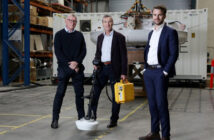
Victoria’s COVID-19 second-wave outbreak and related lockdown has seen a spike in anxiety and worry among Australians everywhere, but particularly in Victoria, new data from The Australian National University (ANU) shows.
The latest survey forms part of the ANU Centre for Social Research and Methods COVID-19 impact monitoring program, taking in the views of over 3,000 people during August. It found more than three-in-five Australians (62.6 per cent) felt anxious or worried about the coronavirus – an increase from 57.3 per cent in May.
The survey also shows fewer Australians are following social distancing measures than before – with only Victorians maintaining the highest level of vigilance.
Study co-author, Professor Nicholas Biddle, said the biggest increase in anxiety and worry occurred among females, jumping from 60.9 per cent in May to 68.3 per cent in August.
“Young Australians also continue to have the highest rates of anxiety and worry in terms of age groups,” he said. “Worry and anxiety among Australians aged 25-34 years increased from 63.4 per cent in May to 69.2 per cent in August.
“And given the circumstances in Victoria, it is unsurprising there has been a greater increase in worry and anxiety among people in that state – jumping from 58.9 per cent in May to 68.1 per cent in August.”
The poll also shows more Australians think they are likely to be infected by COVID-19 as a consequence of the second wave of infections, with increases particularly large for males.
“Among females, 36.3 per cent now think infection is more likely – up from 35.6 per cent in May,” Professor Biddle said. “And among males, 34 per cent think they are likely to be infected. This is up from 29 per cent in May.”
Co-author, Professor Matthew Gray, said the latest poll also revealed interesting and “worrying” trends related to physical distancing behaviour.
“We found there has been a significant decrease in people following physical distancing requirements than earlier in the year,” Professor Gray said.
In total, 72.2 per cent of Australians reported that in the seven days preceding the August survey they always or mostly avoided crowded places. This is compared to 94.3 per cent in April.
A smaller percentage said they always or mostly avoided public places (55.8 per cent), a substantial decline from April (86.5 per cent). There was a smaller decline in the per cent of people who said they always or mostly kept 1.5 metres from others from 96.0 per cent in April to 86.9 per cent in August.
“Even more interestingly though, the change was not consistent across the population,” Professor Gray said.
“For example, declines were greatest outside of Victoria. But even in that state, there has been fewer people following the requirements since April.”
The survey also found:
- 5 per cent of Australians say they felt lonely (up from 35.7 per cent in May);
- an increase in psychological distress between May and August;
- more Australians are worried about losing their jobs up to an average expected probability of 0.25 across Australia, despite an increase in hours worked by 1.2 hours over the period; and
- a decline in overall life satisfaction from a 6.96 out of 10 in May to 6.85 in August.
The survey is also the first longitudinal study to compare Victorians’ experience and attitudes to COVID-19 with other Australians. It found that among Victorians, life satisfaction decreased from 6.78 out of 10 in May to 6.08 in August.
Other findings show psychological distress, loneliness, expectations of job losses and the likelihood of infection was higher in Victoria compared to the rest of the country, while satisfaction with the direction of the country was lower.
The full results are published online and form part of the COVID-19 monitoring program led by the ANU Centre for Social Research and Methods. Data was collected by the Social Research Centre.






